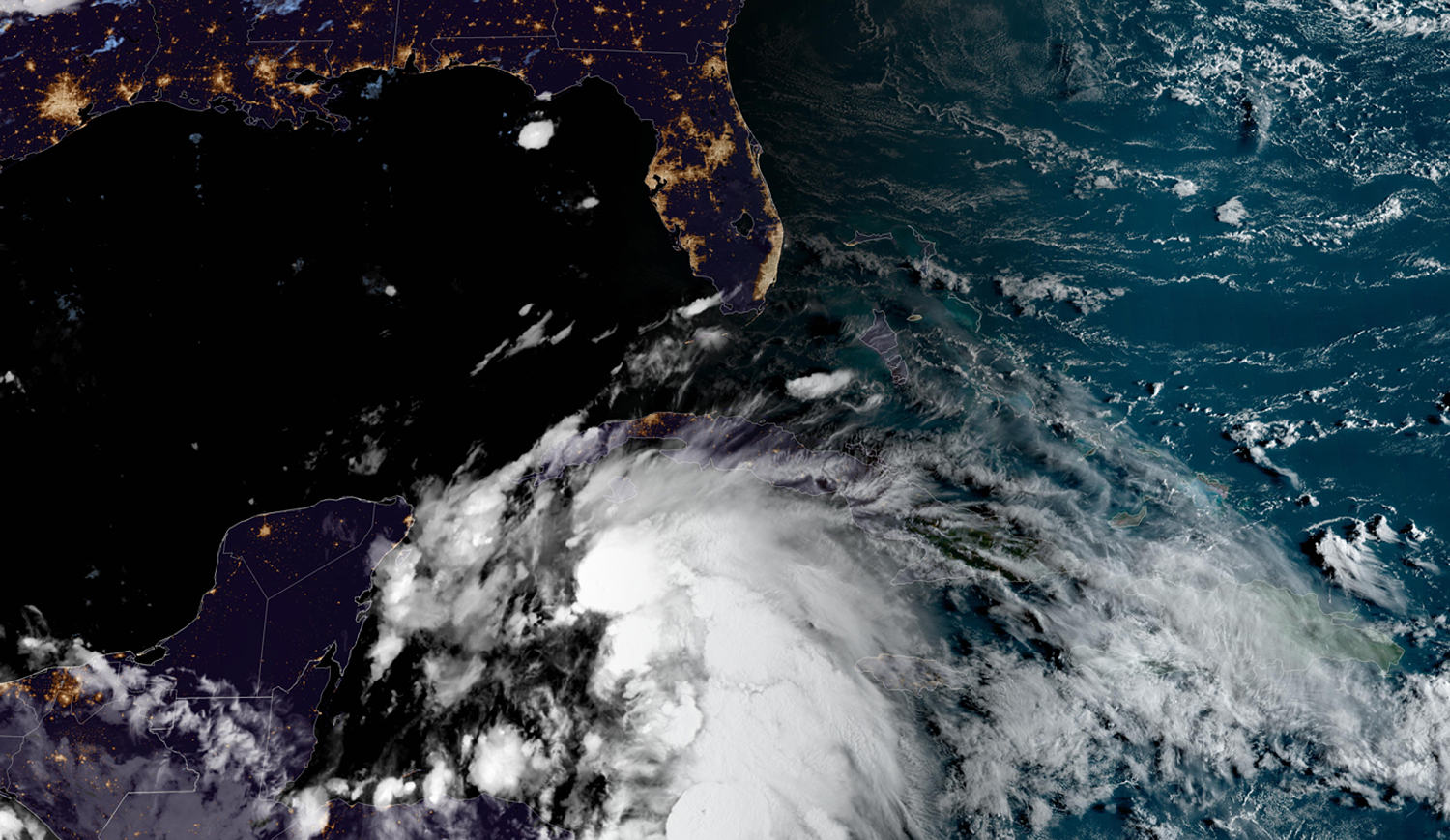
A hurricane watch and warnings of storm surges up to 15 feet high were issued Tuesday for almost all of Florida’s western coastline as Tropical Storm Helene formed over the Caribbean Sea and heads toward the Gulf Coast.
Helene officially formed Tuesday, the National Hurricane Center said in an 11 a.m. advisory. The storm is forecast to strengthen into a hurricane Wednesday, and authorities are urging people to prepare and exercise caution.
The hurricane watch extends from Indian Pass in northwest Florida near Panama City, to Englewood, and includes Tampa Bay.
At 2 p.m. ET the weather system was about 175 miles east, southeast of Cozumel, Mexico, with maximum sustained winds of 45 mph. It’s moving northwest at 12 mph, according to the National Hurricane Center.
If it further upgrades, it’ll be the fourth hurricane to hit the U.S. this year.
The center of the storm is forecast to move across the northwestern Caribbean Sea through Tuesday night and over the eastern Gulf of Mexico on Wednesday and Thursday, the NHC said.
It could potentially reach the Gulf Coast of Florida by Thursday. Helene could become a major hurricane, meaning a Category 3 (with 111 – 129 mph winds) or higher, by then.
Helene is forecast to produce 4 to 8 inches of rain over western Cuba and the Cayman Islands, with isolated totals around 12 inches. In the southeastern U.S., it’s forecast to produce 3 to 6 inches with isolated totals around 10 inches, and will likely result in local flash and urban flooding. It’s also forecast to bring storm surge and strong tide, leading to flooding by rising waters moving inland from the shoreline, the NHC said.
Florida Gov. Ron DeSantis declared a state of emergency in 41 counties Monday, which was expanded to include 61 counties Tuesday. Sandbags were being distributed in Tallahassee, Gulfport and Henrico County ahead of potential flooding.
DeSantis said he requested a pre-landfall emergency declaration from the Federal Emergency Management Agency, and President Joe Biden approved it Tuesday. The governor warned that prediction models range from showing the disturbance forming into a tropical storm, and others show it exploding into a possible Category 4 Major Hurricane.
Models show the Big Bend and Panhandle areas should brace for potential direct impact, he said.
Jonathan Vigh, a meteorologist at the National Center for Atmospheric Research, said on social media platform X on Monday that early data show “the highest probabilities are aimed at #Tallahassee, capital of #Florida, which has about a 45% chance that the center passes nearby.”
DeSantis urged Floridians to prepare by filling gas tanks, stocking up on food, cleaning up yards to prevent strong winds from throwing debris and to be familiar with evacuation zones. So far, 18,000 linemen are ready to restore power, 3,000 National Guard soldiers stand ready to assist and the Florida State Guard has also been activated, along with shallow water vessels and search and rescue crews.
Florida A&M University, Tallahassee State College and Florida State University have called off classes and closed campuses. Hillsborough County Public Schools, in the Tampa area, also announced schools will be closed Wednesday and Thursday.
On the southeastern Gulf Coast, Sarasota County, Charlotte County, and the City of St. Petersburg all declared local states of emergency.
The Sarasota County Government said it’ll send out an evacuation alert for certain communities and manufactured home communities starting Wednesday morning. Charlotte County said evacuations have been ordered for barrier islands, low-lying and flood-prone areas, manufactured homes and residences that can’t withstand powerful winds. The City of St. Petersburg said mandatory evacuations were issued in Pinellas County for healthcare and long-term care facilities in certain zones.
Hernando County, north of the Tampa Bay, also called for mandatory evacuations for areas west of US-19 starting Wednesday morning.
Tampa General Hospital, which has the region’s only Level I Trauma Center, began installing an AquaFence, set to be fully in place by Wednesday. The fence provides “a water-tight barrier capable of withstanding up to 15 feet of storm surge to protect vulnerable areas of the hospital,” the hospital wrote on Facebook.
The National Oceanic and Atmospheric Administration predicted an extremely active hurricane season forecasting 17 to 24 named storms, eight to 13 of which could become hurricanes, including four to seven major hurricanes.
The hurricane season runs from June 1 through November 30. The reasons for the high activity include warmer than average sea surface temperatures in the tropical Atlantic and Caribbean sea, reduced vertical wind shear, weaker tropical Atlantic trade winds and an enhanced west African monsoon.
In the case of Helene, record warm waters will fuel the intensification of the disturbance. According to Climate Central, exceptionally warm sea surface temperatures along the system’s projected path, through the Northern Caribbean and Eastern Gulf of Mexico, have been made at least 200 to 500 times more likely due to human-caused climate change. Rapidly intensifying hurricanes are becoming more common in the warmer world.
If Helene does become a hurricane, it’ll be the fifth hurricane to make landfall on Florida in three years, according to the Florida Climate Center.